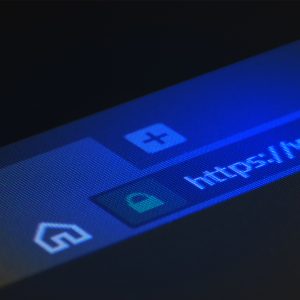
Cybersecurity professionals face enormous and fast-evolving challenges – and not just from their criminal opponents. Securing talent to keep defences up is an increasingly demanding task. Just look at the numbers: A 2020 survey by (ISC)2 highlighted some 359,000 unfilled cyber jobs in the US alone, with another 3.12 million worldwide.

CISOs must recruit from a broader range of backgrounds and skillsets to create an innovative and dynamic security function. (Photo by Sarinyapinngam/iStock)
And as director of analysis at Darktrace Brianna Leddy states, the skills gap will only become starker as hackers continually hone and adapt their strategies. “The attacks of today are fast-paced, stealthy and complex,” Leddy adds. She emphasises that advancements in new offensive technology only exacerbate this.
“When we look at the defence side, we find that cybersecurity is no longer a human-scale problem,” Leddy explains. “Even the most skilled and experienced security teams can’t keep pace with machine-speed attacks.”
In practice, that means many attacks unfold in seconds – making it challenging for even the most dedicated professionals to react quickly enough.
Combined with the shifting work patterns of the pandemic, Leddy suggests cybersecurity has reached a genuine “watershed” moment. The answer lies in a two-pronged approach, requiring both an influx of new talents and new technologies.
Puzzle-solving mindsets
Naturally, bringing in fresh and diverse skills and viewpoints is more vital than ever in this brave new world.
Leddy herself entered the fray circuitously, initially studying chemical engineering before joining Darktrace in 2016. She’s obviously glad she shifted professions. Because cybersecurity threats are constantly changing, she says there’s “always something new” on the horizon. “It’s hard to get bored,” she concedes.
That sense of novelty is what first inspired Leddy to strike out in a different direction. “I always had that puzzle-solving mindset,” she says, but engineering could not always offer enough of a challenge. “I was looking for something that was more on the cutting-edge – and that’s where I learned about opportunities to apply that engineering mentality to security.”
Leddy is not alone. Within Darktrace, she points to colleagues who initially studied neuroscience, linguistics, and even music before making the shift to cybersecurity. It is an approach she believes all enterprises should pursue. Hunting for talent from beyond the cybersecurity echo chamber is crucial.
For Leddy, drawing input from an array of backgrounds brings “a fresh perspective” to the business of cybersecurity. “Individuals from nonstandard backgrounds ask different questions; they challenge the way that we’ve always done things. Ultimately, this drives innovation,” she says. And, while Leddy stresses that traditional STEM students are still an essential part of the recruitment puzzle, Darktrace’s director of analysis also believes a “multitude of different skills” is needed to build an all-star cyber team.
To explain this, Leddy reflects on her own academic background. As an engineer, she was trained to “really question things” before coming to any conclusions, an asset that has proved useful at Darktrace. Every time she catches a new vulnerability, Leddy now battles hard to understand exactly how it operates – and exactly how to defeat it.
“It’s still applying the same methodology that I would have used as an engineer – to look at the data, to query different sources, and determine how we can best proceed.”
Diverse workplaces
According to a recent National Cyber Security Centre study, two-thirds of cyber professionals identify as male.
Redressing this skewed balance in favour of women has a strong ethical dimension. As Leddy says: “We need the diversity of our cybersecurity teams to reflect the diversity of the customers and the world that we’re trying to protect.” Among other things, encouraging a heterogeneous staff can make it easier to get into the mindset of dangerous hackers – who, after all, hail from all over the world.
Of course, promoting diversity is easy in theory. But crafting a genuinely diverse office is far more complex, especially given the stereotypes that still linger within the cybersecurity field.
One way forward, suggests Leddy, is to walk the walk – creating pathways for underrepresented groups to be promoted into leadership positions.
Leddy’s employer is a strong example. Four of Darktrace’s 11-strong executive team are women, including its CEO, CFO, and chief strategy officer. Across the entire company, nearly half of all employees are women, something Leddy cites as being particularly impressive given industry averages.
Retain as well as recruit
While an increasing number of enterprises are following Darktrace’s lead, recruitment is only part of the process. Beyond widening their talent search, security leaders need to ensure they can retain those they bring on board – by no means a certainty given competition and opportunities in the cyber field. A diverse, dynamic workplace is critical, but Leddy also points to another potential tool at the CISO’s disposal: artificial intelligence.
For starters, AI ensures that individuals feel empowered to harness the newest technology transforming the cyber industry. For another, it can make the day-to-day work of a cybersecurity professional a lot more dynamic and fulfilling.
Rather than sifting through reams of data “looking for needles in haystacks,” Leddy cites cybersecurity professionals leaving the “heavy lifting” to the technology. Adopting AI creates a more proactive security approach and gives human teams more time to pursue more ambitious, value-added projects. Both the security industry broadly and security professionals can “move to a more proactive state in our defences.”
AI can also help counteract many of the recruitment problems currently blighting cybersecurity. AI can handle labour-intensive, repetitive tasks automating some undertakings without the need for constant human supervision.
But AI can also go beyond human capabilities to respond quickly and effectively to contain machine-speed attacks from spreading within an organisation’s digital infrastructure.
In the end, CISOs need to investigate a diverse range of solutions and strategies to address the myriad challenges they face, both in terms of technological and human resources. Only through widening their search for answers and questioning established orthodoxies can security leaders create a cyber function that reflects and adequately responds to the environments in which they operate.






